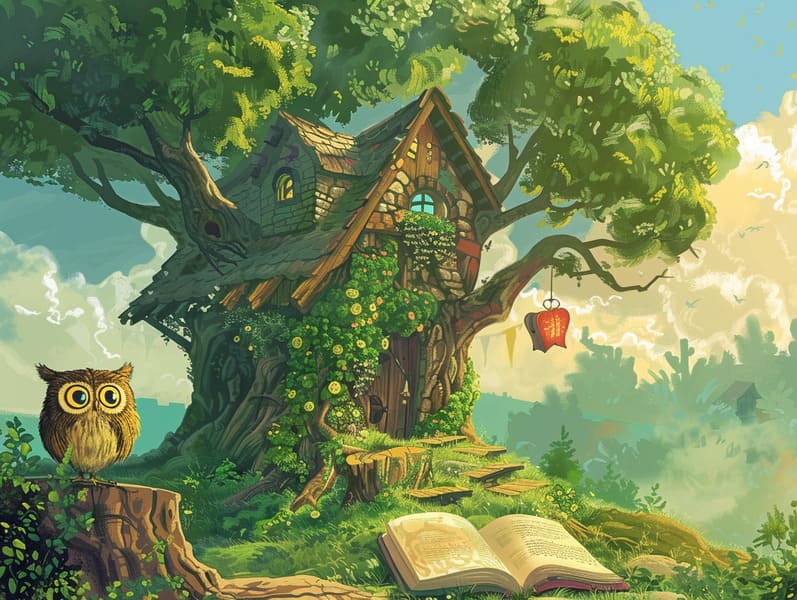
Classic fairy tales have legendary status. These tales have been narrated from one generation to the next long before they were ever published. They originated from a variety of cultures, including American traditions. They were initially transmitted among mature audiences, often carrying themes and messages mirroring the societal norms and beliefs of the time.
The Brothers Grimm, Jacob and Wilhelm Grimm, were among the first to gather and publish many of these beloved fairy tales. Their collection, "Grimm's Children's Stories," included tales like "Cinderella," "The Bread Crumb Trail," and "Schneewittchen," which have since become mainstays in the world of beloved fairy tales. Similarly, the Danish author's fantastical narratives, such as "The Story of the Little Mermaid," and "The Duckling that Could," have floated into hearts worldwide, solidifying their place in the pantheon of classic fairy tales.
Despite their historical roots, classic fairy tales remain as impactful as ever, especially as children's night stories. These charming stories are now available in numerous formats, including artistically illustrated books, delightful animations, and web-based fairy tales.
Their lasting appeal can be attributed to several delightful features:
Significant Morals: Ancient fairy tales often teach important moral lessons. Narratives like "The Tale of the Boy Who Cried Wolf" teach the virtue of integrity, while "The Tortoise and the Hare" exemplify the qualities of tenacity and humility. These narratives offer children clear distinctions between correct and incorrect, shaping their moral compass in a soft yet meaningful way.
Kindness and Comprehension: Ancient fairy tales frequently involve individuals facing challenges and struggles, inspiring listeners to identify with their struggles and encourage their triumphs. For instance, "The Tale of Beauty and the Beast" highlights the necessity of seeing beyond looks to perceive the true character of a soul, strengthening insight and comprehension.
Cultural Understanding: Many timeless fairy tales are steeped in the cultural contexts from which they emerged. Delving into these narratives can provide captivating looks into different cultures, cultivating a sense of world respect and acknowledgment.
Creativity and Fantasy: The enchanted elements in old fairy tales—mythical creatures—fire up children’s fantastical thinking. These fairy tales carry readers to fantastical realms, firing up fantasy dreams and a sense of amazement that lasts a lifetime.
Timeless fairy tales are not only spellbinding but also didactic. They act as enchanted tools in cultivating various intellectual and emotional capacities in little ones. When timeless fairy tales are narrated, they strengthen language development by presenting new terms and detailed sentence structures. This practice also promotes hearing abilities and attentiveness, as the young pay close attention, ready to see what happens next.
Furthermore, conversing about the themes read more and characters of traditional fairy tales can promote cognitive skills and logical thinking. The young are led to find patterns, expect results, and grasp cause and effect. These conversations also contribute to young readers articulate their thoughts and feelings, nurturing their emotional intelligence.
In today’s electronic age, the proliferation of online fairy tales has made these tales more available than ever. Web platforms and digital apps present comprehensive collections of ancient fairy tales that can be browsed or listened through anytime, anywhere. Fairy tales voiced are particularly favored, sharing an fascinating method for kids to appreciate these charming stories. Sound books and read-out-loud videos bring characters and settings to life, often paired with fantastical background sounds and melodies that enrich the narrative experience.
The timeless fascination of old fairy tales lies in their ability to adjust to present days while holding onto their central values. Contemporary versions of these fairy tales often include more multicultural figures and modern settings, making them accessible to today’s audience. However, the central morals of guts, kindness, and righteousness remain unchanged, continuing to move listeners of all ages.
Fairy tales also offer a sense of contentment and predictability. They bequeath a tidy narrative with a evident beginning, middle, and end, often finishing with the conclusion of conflicts and the triumph of honesty over deceit. This assuredness can be encouraging for the young, furnishing a sense of sturdiness in an ever-changing world.
Old fairy tales continue to charm and inform new generations, maintaining their beauty and impact in modern society. As children's night stories, they impart a perfect blend of fascination and comprehension, fostering moral values, empathy, and creativity. The proliferation of web-based fairy tales and the favor of fairy tales spoken certify that these ancient stories remain available to new generations.
By retaining and spreading these stories, we continue to esteem the rich tapestry of inventiveness and cultural heritage. Whether you are perusing a vibrantly illustrated book, viewing a internet library, or playing an voice book, the beauty of timeless fairy tales is always within reach. These tales illustrate of the continued force of stories and its ability to hold us together across generations and cultures.
Regardless if you are exploring a gorgeously illustrated book, enjoying a cyber library, or playing an spoken story, the fascination of ancient fairy tales is always within reach.
These fairy tales teach us of the immortal essence of tales and its ability to connect us across generations and cultures, making a tie that enchants and educates alike.
Comments on “The Rise of Fairy Tales to Read and the Lasting Loveliness.”